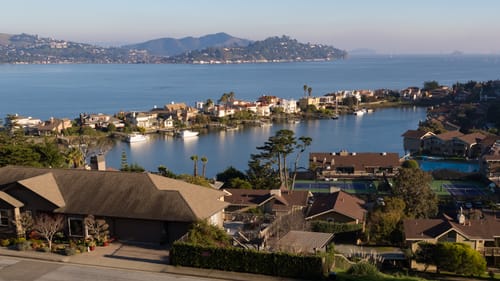Stay in the Loop
BSR publishes on a weekly schedule, with an email newsletter every Wednesday and Thursday morning. There’s no paywall, and subscribing is always free.
"Safe" communities (and other human delusions)
After the Parkland massacre

A deranged World War II veteran named Howard Unruh shocked Americans in 1949 by randomly killing 13 people in Camden, New Jersey, with a German Luger pistol. Nearly 35 years passed before another mass shooting of even half that magnitude occurred in the U.S. That was in July 1984, when James Huberty — armed with a long-barreled Uzi, a pump-action shotgun, and a handgun — shot and killed 21 adults and children at a McDonald’s in San Ysidro, California.
Since then, there have been 31 more mass killings of at least eight people. Five of the 11 deadliest mass shootings in U.S. history have occurred within the past 26 months. (For a complete rundown, click here.)
What has changed since 1984 to transform the unthinkable into the almost routine? Are Americans today angrier than they used to be? (Maybe, given the extent of Donald Trump’s support.) Do ordinary Americans enjoy greater access to deadlier weapons than ever before? (Obviously.) Does the advent of round-the-clock cable news and social media inadvertently provide a showcase for anyone armed with a grievance and an AR-15? (Quite possibly.)
Natives vs. immigrants
I’m no social scientist. But I have noticed a few common threads among the 33 mass shootings since 1984 that many other commentators have overlooked.
- The overwhelming majority of these shootings were committed by native-born Americans. Only four were the work of immigrants. This should not surprise us. Most of today’s American anger festers among the native-born. Immigrants, on the other hand, tend to be optimists. They’re grateful to be here, especially compared to the places they left. They value traditional family structures more so than U.S. natives. They also commit much less crime. (Roughly 1.6 per cent of immigrant males between age 16 and 19 wind up in prison, compared with 3.3 percent of native-born citizens.) These tidbits are worth remembering the next time President Trump seizes upon some immigrant felony as a pretext for deporting or harassing millions.
Major-league cities
- Virtually all of these mass shootings have occurred in rural towns or suburbs like Newtown, Connecticut; Sutherland Springs, Texas; or Littleton, Colorado— places widely considered “safe.” Parkland, Florida, the scene of last week’s massacre of 17 high-school students and teachers, was named Florida’s safest city last year by the National Council for Home Safety and Security. Only three of these 33 mass shootings — the murders of 49 people at the Pulse nightclub in Orlando in 2016, Mark Barton’s murder of his family and nine other people in Atlanta in 1999, and the murders of 13 people at a gambling club in Seattle in 1983 — occurred in a city large enough to support a major-league sports team.

Is this a coincidence? I don’t think so. Big cities may be dangerous places, but big-time paranoia tends to breed in relative isolation — in places like Edmond, Oklahoma (where a part-time postal worker killed 14 colleagues in 10 minutes in 1986) or Killeen, Texas (where George Hennard shot and killed 23 people at a cafeteria in 1991). If you’re a Philadelphia teenager suffering from depression, you can at least find many others who relate to your struggles and may be able to assist you in person. But if you're isolated on the Red Lake Indian Reservation in Minnesota, your torment could conceivably turn violent. (Red Lake Senior High School was the scene of a 2005 mass shooting.)
Years ago, I wrote a magazine profile of Marin County, California, the famous “end of the rainbow” across the Golden Gate Bridge from San Francisco. Here I found a sublime community of bright, beautiful, affluent people — many transplanted from the East — who basked in a serene climate with easy access to scenic mountains, golden beaches, and urbane culture. Yet a bit of research turned up the astonishing fact that Marin had the nation’s highest rates of alcoholism, divorce, and suicide. The reason soon became clear: people moved to Marin in the belief that doing so would solve their problems. When it didn’t, their real problems began.
The very notion of “safe” or “happy” communities is a delusion. We who live in big cities may understand that better than others.
These reflections will provide cold comfort to the families of the 17 victims of last week’s high-school massacre in Parkland, not to mention the victims of the next massacre, or the next. A civilized society can take sensible steps to reduce these atrocities. But when we address these issues, it helps to bear in mind just how fragile our civilized trappings really are.
Sign up for our newsletter
All of the week's new articles, all in one place. Sign up for the free weekly BSR newsletters, and don't miss a conversation.

 Dan Rottenberg
Dan Rottenberg